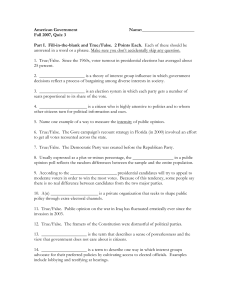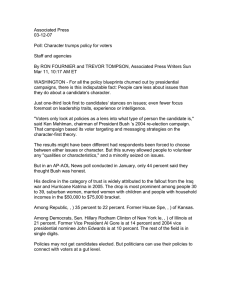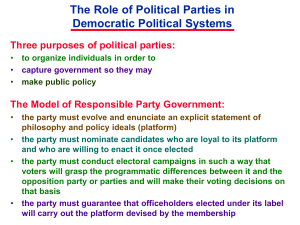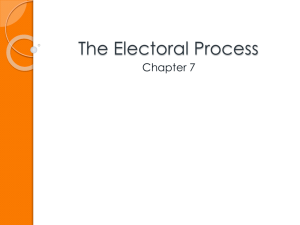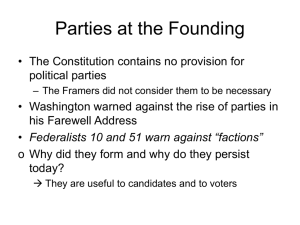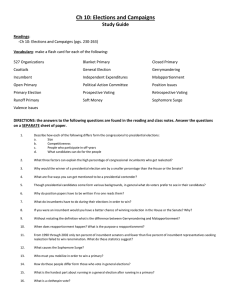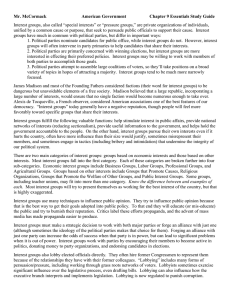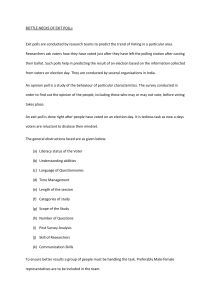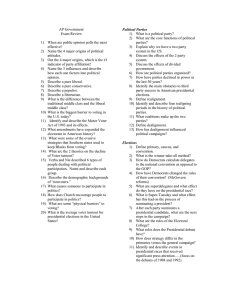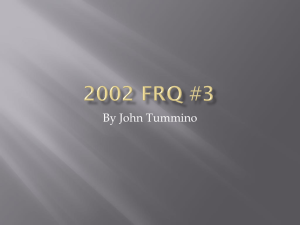Quarterly Term List 2015
advertisement
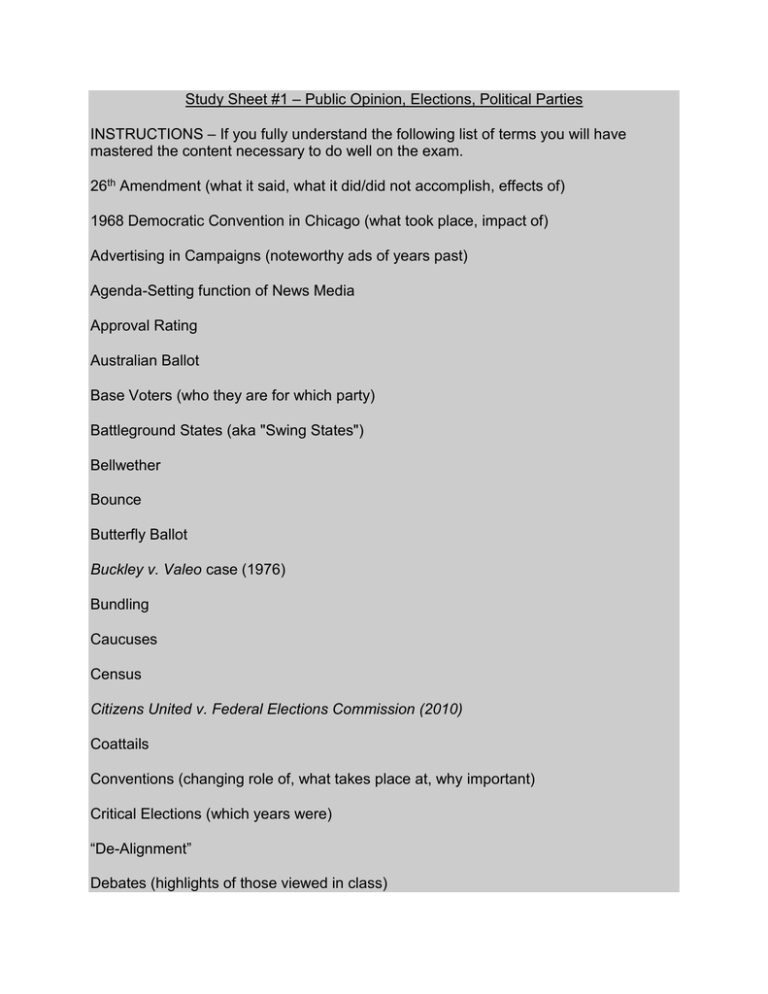
Study Sheet #1 – Public Opinion, Elections, Political Parties INSTRUCTIONS – If you fully understand the following list of terms you will have mastered the content necessary to do well on the exam. 26th Amendment (what it said, what it did/did not accomplish, effects of) 1968 Democratic Convention in Chicago (what took place, impact of) Advertising in Campaigns (noteworthy ads of years past) Agenda-Setting function of News Media Approval Rating Australian Ballot Base Voters (who they are for which party) Battleground States (aka "Swing States") Bellwether Bounce Butterfly Ballot Buckley v. Valeo case (1976) Bundling Caucuses Census Citizens United v. Federal Elections Commission (2010) Coattails Conventions (changing role of, what takes place at, why important) Critical Elections (which years were) “De-Alignment” Debates (highlights of those viewed in class) Efficacy Electoral College (how it works, importance of two-party system, why controversial, effect on campaign strategy) Entitlements / Entitlement Programs Exit Polls Focus Group Gender Gap Gerrymandering Hard Money vs. Soft Money “Horse Race” (media coverage of) Illusion of Saliency Independent Expenditures Iowa and New Hampshire (role in presidential nominating process, why praised, why criticized) "Linkage Institutions" Mandate (electoral, not fiscal/financial) McCain-Feingold Law McCutcheon V. Federal Election Commission “Motor Voter” Law Nominating Process (how parties select presidential candidates, changes in process over past forty years and since inception) Party ID (what it is / as predictor of voting behavior) Political Participation (most common form(s) of) Political Parties (origins of, structure of, eras of party dominance) Political Socialization Polls (what they are, how used, factors affecting accuracy of) Primaries (open vs. closed) Prospective vs. Retrospective Voting Public Financing (which types of campaigns receive it and from what sources, which do not) Public Opinion (definition) Push Poll Rally Around the President Effect Realignment (definition of) Reapportionment Redistricting Registered vs. Likely Voters Sampling Spin Straight Ticket vs. Split-Ticket Voting (trends over past several decades) Superdelegates "Superpacs" Swing Voters Third Parties and Independent Candidates (why they emerge, why they usually fail, what traditionally happens to them, names of some candidates) Tracking Poll Trust and Confidence in Government (Polling Trends in Last 30-40 Years) Turnout (what it means, typical percentages, how United States compares with other nations, groups with high/low turnout and implications, historical and current obstacles to) Vice-Presidential Selection (criteria frequently used by presidential nominees in choosing running-mates)

